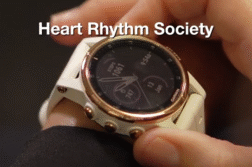CLEVELAND, Ohio. (Ivanhoe Newswire)- STEMI is the most severe type of heart attack, where every second counts. Now, a newly published study shows that a standardized plan to reduce the time from a patient’s arrival until blood flow is restored to the heart, called door-to-balloon time, can improve survival for all patients. STEMI Protocol
Every year, three million people have what’s known as STEMI, or ST elevated myocardial infarction. One of the main arteries to the heart is 100 percent blocked.
Dr. Umesh Khot, the Head of Regional Cardiovascular Medicine at the Cleveland Clinic explains, “The heart muscle is dying and it’s important that patients get emergency care to open up the artery as soon as possible.”
Dr. Khot and his colleagues at Cleveland Clinic studied patient outcomes using their protocol for treating STEMI, which included a safe handoff checklist, immediate transfer to a cardiac cath lab, and using an artery in the wrist instead of the groin for safer access to the blockage. The researchers say they wanted to determine the impact the protocol had on patients from lower socioeconomic neighborhoods.
Dr. Khot says, “We know that those patients tend to be higher risk and have a higher risk of dying from this heart attack.”
The researchers found the STEMI protocol greatly improved the chances of in-hospital survival for all patients.
“We saw a significant improvement in how they received medications and how fast they were treated. And ultimately that led to a 60 percent reduction in their chances of dying,” Dr. Khot explains.
Improving heart attack survival overall, regardless of a patient’s zip code.
The study was published late last year in the Journal of the American Heart Association, and Dr. Khot says a number of hospital systems nationwide are now studying the STEMI protocol to see if they can replicate it.
Contributors to this news report include: Cyndy McGrath, Executive Producer & Field Producer; Kirk Manson, Videographer; Roque Correa, Editor.
To receive a free weekly e-mail on Medical Breakthroughs from Ivanhoe, sign up at: http://www.ivanhoe.com/ftk
MEDICAL BREAKTHROUGHS
RESEARCH SUMMARY
TOPIC: STEMI PROTOCOL: DOOR-TO-BALLOON SAVES LIVES
REPORT: MB #5006
STEMI BACKGROUND: STEMI or ST segment elevation myocardial infraction will most commonly occur when there is a blockage of a major epicardial coronary vessel. This is a very serious form of an acute coronary syndrome. It is life-threatening and time sensitive. It must be diagnosed and treated immediately, usually by a percutaneous coronary intervention. Though there are different types of acute coronary syndromes, during STEMI, the ECG will show significant ST segment elevation, which is why it is referred to as STEMI.
STEMI DIAGNOSING: Chest pain or discomfort is the main symptom of myocardial ischemia, and it is especially common when patients are experiencing STEMI. This happens because the extent of the ischemia is greater in STEMI versus other diagnoses like NSTEMI and unstable angina. This also means that patients diagnosed with STEMI are at a higher risk of life-threatening ventricular arrhythmias or VT. VT and VF (ventricular fibrillation) may occur any time after occlusion of the coronary artery. Ventricular tachycardia and ventricular fibrillation cause the majority of deaths in the acute phase of STEMI. Death can also occur due to pumping failure, or cardiogenic shock, but this is much less common in the acute phase.
(Source: https://ecgwaves.com/topic/stemi-st-elevation-myocardial-infarction-criteria-ecg/)
NEW TECHNOLOGY: There are tools to prevent false positives when being diagnosed with STEMI. False positive STEMI diagnosis are a common problem in healthcare which can lead to significant avoidable clinical and financial issues for both the healthcare system and the patient. The twelve-lead ECG is a tool to help guide emergency management of STEMI, but the misinterpretation of STEMI has increased rates of unnecessary emergency coronary angiography, even with the shorted time of door-to-balloon. Researchers are developing tools to help physicians prevent false positive STEMI diagnosis so that appropriate courses of treatment can be established. Identifying independent predictors of false positives can be helpful for ensuring an accurate diagnosis. In the absence of chest pain other indicators such as: advanced patient age, female sex, history of myocardial infarction, and presence of established complications can help to avoid a false diagnosis.
(Source: https://www.gehealthcare.com/article/tools-to-improve-stemi-diagnosis-and-prevent-false-positives)
FOR MORE INFORMATION ON THIS REPORT, PLEASE CONTACT:
Hope Buggey
If this story or any other Ivanhoe story has impacted your life or prompted you or someone you know to seek or change treatments, please let us know by contacting Marjorie Bekaert Thomas at mthomas@ivanhoe.com




